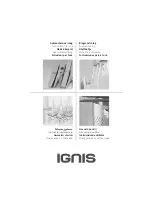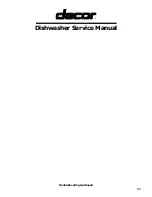
- 8 -
In the event of a fault
Trouble shooting list
Never attempt to repair the dishwasher yourself.
Repairs carried our by unauthorised or inexperienced
persons can cause injury or other machine faults.
If water leaks from the machine, turn off the water supply tap or stopcock immediately and isolate
the machine from the electrical supply by removing the plug from the wall socket.
Check that all seals, seams and connections are watertight.
There is always a certain risk of leakages in any machine connected to a water supply, no matter what water safety
features it may have. Therefore it is advisable always to turn off the water supply tap when the machine is not in use.
Check the following before calling a repairman:
• Dishwasher fails to start.
• Is the door properly closed?
• Have you set the programme control knob properly?
• Is the water tap or stopcock on?
• Is the dishwasher plugged in?
• Has the fuse blown?
• Water not discharged at end of cycle.
• Did you open the door before the light went out
and the cycle ended?
• Are the strainers/filters clogged?
• Is the discharge hose blocked?
• Dishes not washed satisfactorily.
• Has anything prevented the spray arm from rotating?
• Were the dishes packed too close together?
• Did you use enough detergent?
(Correct amount: about 1-2 tablespoons/load)
• Are the strainers/filters clogged?
• Is the rinse aid dispenser empty?
• Check that the spray arm holes are not clogged.
• Are the strainers/filters fitted correctly in place?
• Dishes dull or streaky.
• Limescale from hard water has probably formed in
the machine and is being deposited on the dishes.
Buy a limescale remover and follow the instructions
on the package to descale the dishwasher.
Fault
Check
This appliance complies with the following E.E.C. directives:
–
73/23/EEC, dated 19.02.1973 – low-voltage directive.
–
89/336/EEC, dated 03.05.1989 (incl. amendment
–
92/31/EEC) – directive on electromagnetic compatibility.






























